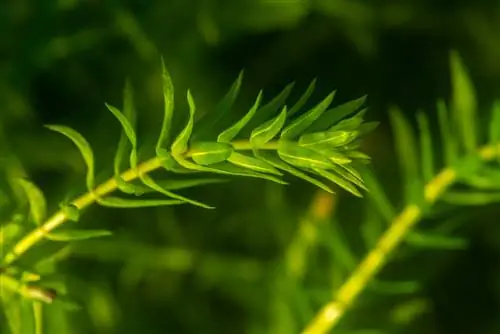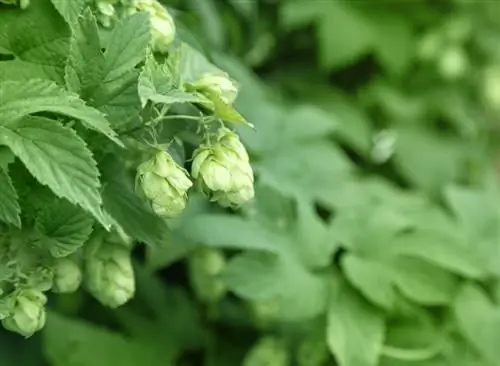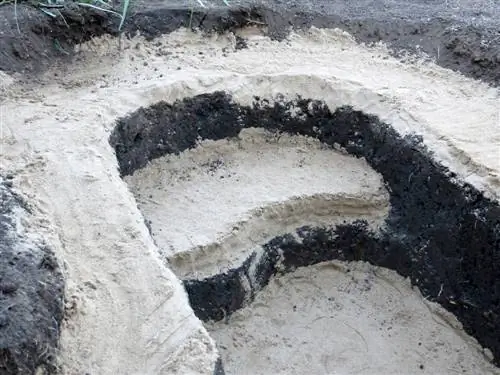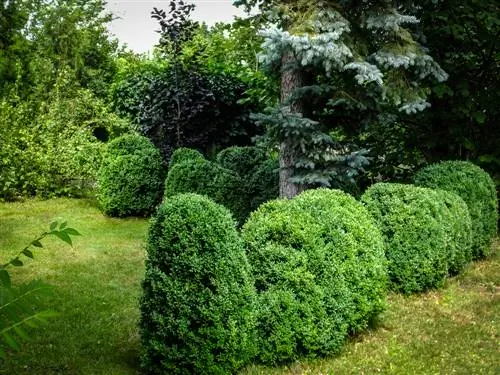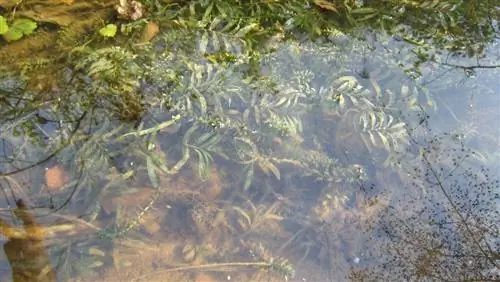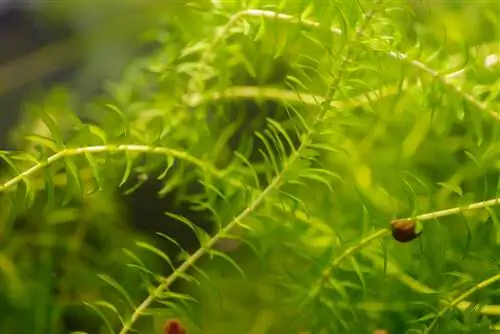- Author admin [email protected].
- Public 2023-12-16 16:46.
- Last modified 2025-06-01 06:02.
Waterweed is an interesting plant that became native here more than a century ago and colonizes numerous natural bodies of water. Hardly any garden pond or aquarium can do without them. But how well do we know them?
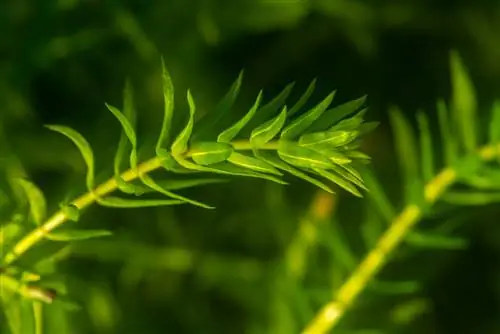
What kind of plant is waterweed?
Waterweed is a perennial, herbaceous plant from the frogbite family. It occurs in natural still waters, grows free-floating or rooted and has tendrils up to 3 m long. Propagation occurs vegetatively.
Name and family
The waterweed, scientifically Elodea, is a genus in the frogbite family and originally comes from North and South America. It includes 12 species, three of which have now become native to Central Europe:
- Canadian waterweed - Elodea canadensis
- Narrow-leaved waterweed - Elodea nuttallii
- Argentine waterweed - Elodea callitrichoides
Growth and appearance
The plant grows like a herb and is perennial, but also evergreen. In winter, the shoots outside turn brown and sink to the ground, but new growth occurs reliably in spring.
- grows free-floating or rooted to the ground
- individual tendrils can grow up to 3 m long
- the elongated, approx. 3 cm long leaves are arranged in threes in so-called whorls
- white flowers from May to September
- but rarely blooms in this country
Habitats
The water plague occurs in natural still waters. It tolerates temperatures between 4 and 26 °C, likes bright to partially shaded places and requires a nutrient-rich environment to grow. It keeps the water clean and enriches it with oxygen. It is also an ideal hiding place and spawning place. These useful properties have brought them into artificial habitats such as garden ponds and aquariums.
Tip
The Argentine water plague is more sensitive to cold. In this country it is only really safe to overwinter in an aquarium. It is enough if only a small piece is “stored”. In summer it will turn into a large plant.
Propagation
Female plants were introduced into Europe, which is why propagation occurs vegetatively. An independent plant can develop from every small, even rootless, part of the waterweed. This explains, among other things, how widespread it is and how difficult it is to combat.
You can propagate waterweed at home by planting a head cutting or a section at least 2 cm long or letting it float in water.

